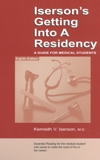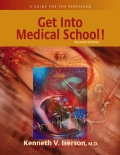|
|
Links: FACTOIDS ABOUT MEDICINE, SPECIALTIES, & RESIDENCY
The number of applicants in the NRMP match now exceeds the number of available first-year residency positions. Between 1960 and 1998, the physician population in the United States grew by 168%, while the general population grew by only 46%. During your residency visit, there are specific questions you should ask the residents, some you can only ask the faculty, and some you shouldn't ask at all-if you want to get in. Some subspecialties require up to eight years of training alter completion of medical school. Medical genetics is the newest medical specialty. Most U.S. physicians practice General Internal Medicine (17%), Family Practice (8.5%), General Surgery (5.4%), Pediatrics (5.2%), and Obstetrics & Gynecology (5.2%). The fewest number of U.S. physicians practice Aerospace Medicine (0.1%), Colon & Rectal Surgery (0.1%), Forensic Pathology (0.1%), Medical Genetics (<0.1%), and Osteopathic Manipulative Medicine (<0.1%). Trauma surgery, administrative medicine, and medical informatics are not yet official specialties. The Must/Want Analysis (described in Iserson's Getting Into A Residency: A Guide For Medical Students. Fifth Edition) is an objective way to rate residency programs based on your own criteria. The largest number of entry-level residency positions is in Internal Medicine, Family Practice, Pediatrics, and General Surgery. The average OB/Gyn resident works 75 hours per week; Dermatology residents work about 43 hours per week. This parallels what occurs after residency finishes. Between 1970 and 2000, the number of Osteopathic physicians doubled, the number of D.O. schools more than doubled, and the number of D.O graduates tripled. More than half of all D.O.'s take residency training at M.D. institutions. About 91% of Family Physicians and General Internists participate in managed health care delivery, and work an average of 57 hrs./week. Hawaii, Pennsylvania, New Jersey, Vermont, Rhode Island, Connecticut, Maryland, New York, Massachusetts and the District of Columbia have the highest numbers of physicians per capita. Women physicians in practice still earn 40% less than their male counterparts. Only 66% marry, compared to 90% of male physicians. The specialties in which practitioners say that the specialty best met their expectations are Geriatric Psychiatry, Emergency Medicine, Hematologic Pathology, Pediatric Radiology, Pediatric Surgery, and Family Practice. Those
specialties in which practitioners say that the specialty least
met their expectations are Hand Surgery (General Surgery), Blood
Banking/Transfusion Pathology, Pediatric Endocrinology, Orthopedic
Spinal Surgery, and Pediatric Hematology-Oncology. |
|
©
Copyright 2001-2013 Galen Press, Ltd.
|
 EXTRAS
EXTRAS
 Rèsumès
and Personal Statements for Health Professionals, 2nd Edition
Rèsumès
and Personal Statements for Health Professionals, 2nd Edition Iserson's
Getting Into a Residency: A Guide for Medical Students, 8th Edition
Iserson's
Getting Into a Residency: A Guide for Medical Students, 8th Edition Get
Into Medical School! A Guide for the Perplexed REVISED
Get
Into Medical School! A Guide for the Perplexed REVISED